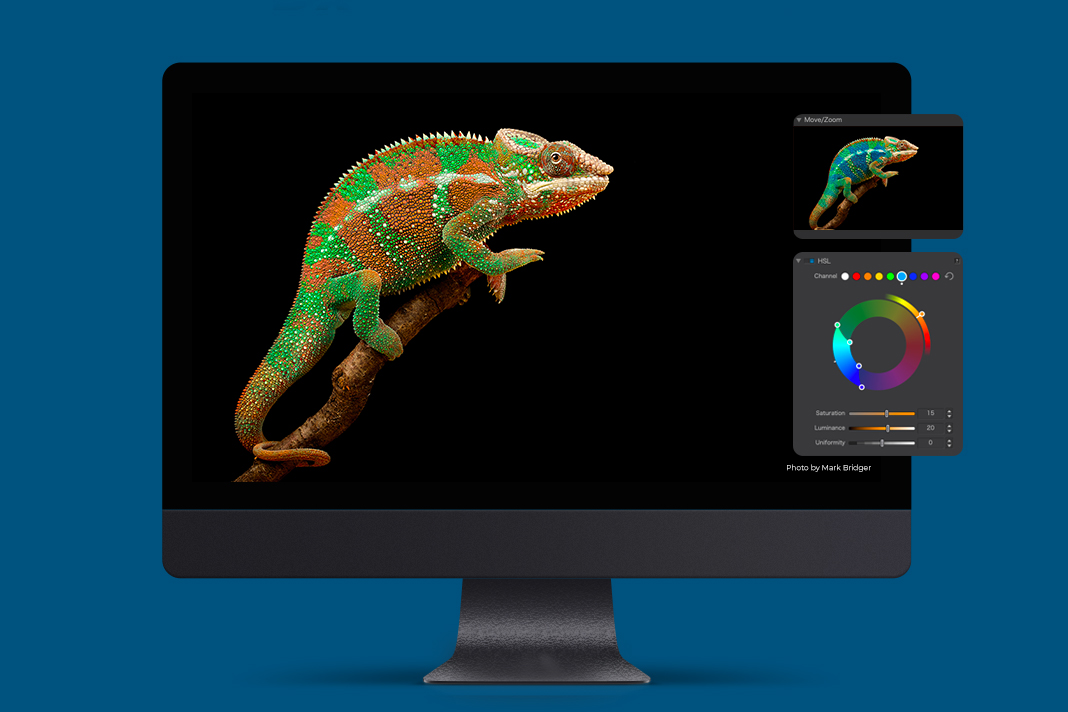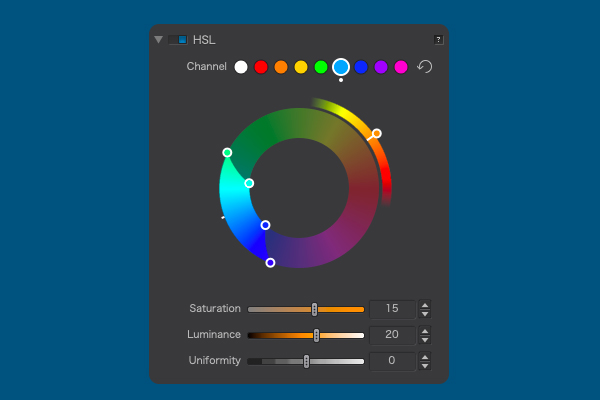Known for custom camera and lens calibration and the previously Google-owned U-point adjustments, DxO is aiming to stake a claim on color management with DxO PhotoLab 3. Announced on Wednesday, October 23, DxO PhotoLab 3 enhances the photo editor’s color management tools with a new DxO ColorWheel, along with updates to local adjustment layers and a keyword search.
Rather than using only sliders for each color channel, DxO PhotoLab 3 uses a color wheel. Photographers can select one of the eight pre-determined color channels to adjust from the top. By dragging the handles on the color wheel, editors can also extend that range and even add new options to the list of color channels.
Unlike Lightroom’s hue sliders that only allow adjustments to a neighboring color, the ColorWheel can do a complete 180, replacing a color channel with any other color on the wheel. Along with the more versatile wheel, the saturation and luminance sliders operate more independent of each other, DxO says.
The ColorWheel also includes a uniformity slider, which can be used to make the colors in the selected range more similar. DxO says the feature is ideal for edits like correcting uneven skin tone.
Also new to the program, the local adjustments mask manager palette simplifies working with multiple local adjustments, including adjustments made using the U-Point tool originally part of the Nik Collection. With the new local adjustments mask manager, photographers can adjust the opacity of the layer individually, hide layers or invert the mask.
While the ColorWheel and adjustment layers aim to set the software apart on the list of Lightroom alternatives, other updates help the program catch up. The repair tool has been updated to allow photographers to choose the reference area manually. The tool also has a clone mode now as well as the repair mode. The software’s search tool has also been updated to include the keywords added to an image on Mac OS, with a future update expected to bring the option to Windows.
At launch, DxO PhotoLab 3 will sell for about $100 for the Essential edition and $150 for the Elite edition, available for both Mac and PC. After November 24, the prices will increase to $129 and $199. A free one-month trial is also available for new users.





